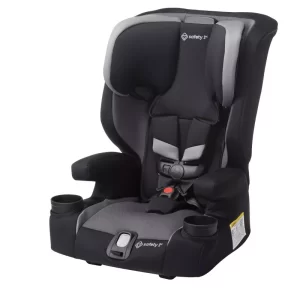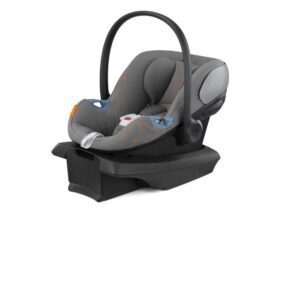Washington State Car Seat Laws 2019

THE GOVERNOR OF WASHINGTON SIGNED INTO LAW NEW CAR SEAT REQUIREMENTS IN APRIL 2019. THE NEW WASHINGTON STATE CAR SEAT LAWS TAKE EFFECT ON JANUARY 1, 2020. WASHINGTON’S NEW CAR SEAT LAWS ARE UPDATED TO ENSURE MAXIMUM SAFETY FOR CHILDREN.
It’s important to note up front. When states change laws like this, they aren’t trying to make parents or caregivers lives harder. They are trying to put into law information that will make your family safer. The leading cause of death of children under 12 is car accidents. However, those deaths are preventable in many cases if proper car seat usage was applied always.
***A Quick summary of the laws are provided at the bottom of this post.
BACKGROUND ON THE NEW WASHINGTON CAR SEAT LAWS
Agencies, like the American Academy of Pediatrics, state rear facing is the safest position for your child to be in a motor vehicle for as long as possible. Specifically, children should remain rear facing until at least age 2; however, as long as the child restraint system allows is best. One study shows rearfacing between 12-24 months is 532% safer than forward facing.
Washington has become the newest state to pass a law making sure that more children will remain rearfacing until at least two years old. On April 15 and 16, 2019, the Illinois legislature passed House Bill 1012. This bill makes amendments to RCW 46.61.687; also known as the Child Passenger Restraint Systems. Then, on April 19, 2019 the bill was signed into law by Governor Jay Inslee. The new Washington State car seat laws will go into effect come January 1, 2020.
The previous Washington State car seat laws only required drivers to provide a child under the age of eight (8) with an “approved” safety seat.
What Washington State’s New Car Seat Law Says
For the most part, Washington State Car Seat Laws largely remained the same as they have been for decades. One section of the law got changed in this newest amendment and two new sections have been added. You can also read the actual new Washington State Car Seat Laws 2019 for yourself.
This post is laid out in 2 parts – what the actual laws says word for word broken down by section and what that part of the section means in laymen’s terms.
The new Washington State Car Seat Laws bill amends the previous law and makes the following specifications for a child who is less than 16 years old:
What the new law says Section 1.1a–
A child under the age of two years must be properly secured in a child restraint system that is rear-facing until the child reaches the weight or height limit of the child restraint system as set by the manufacturer. A child may continue to be properly secured in a child restraint system that is rear-facing until the child reaches the weight or height limit of the child restraint system as set by the manufacturer, as recommended by the American academy of pediatrics.
What Section 1.1A means –
Children under the age of two (2) MUST remain rearfacing until they hit the maximum height or weight of the car seat set by the car seat company.
Once they hit two, if they are still not at the maximum height or weight, they can remain rearfacing (this is the safest way).
Please note: Even for children at the top of height charts, it is very unlikely they max out height before age 2.
What the new law says Section 1.1b–
A child who is not properly secured in a rear-facing child restraint system in accordance with (a) of this subsection and who is under the age of four years must be properly secured in a child restraint system that is forward-facing and has a harness until the child reaches the weight or height limit of the child restraint system as set by the manufacturer. A child may continue to be properly secured in a child restraint system that is forward-facing and has a harness until the child reaches the weight or height limit of the child restraint system as set by the manufacturer, as recommended by the American academy of pediatrics.
What Section 1.1b means –
Once a child is over 2 years old OR hits the maximum weight or height of their car seat, they may be turned forward facing in a 5 point harness car seat.
The child must remain harnessed in a forward facing seat until they are 4 years old or hit the weight or height limit of the car seat.
Please note: Even for children at the top of height charts, it is very unlikely they max out height before age 4.
What the new law says Section 1.1c–
A child who is not properly secured in a child restraint system in accordance with (a) or (b) of this subsection and who is under four feet nine inches tall must be properly secured in a child booster seat. A child may continue to be properly secured in a child booster seat until the vehicle lap and shoulder seat belts fit properly, typically when the child is between the ages of eight and twelve years of age, as recommended by the American academy of pediatrics, or must be properly secured with the motor vehicle’s safety belt properly adjusted and fastened around the child’s body.
What Section 1.1c means –
If your child in under 4’9″ (four foot, nine inches) and they have maxed out of the height or weight and are over 4 years old, they must continue to be secured in a child booster seat.
A child can move out of a booster seat when over 4’9″ when a lap and shoulder belt fits properly. Please reference the 5 step test to see if the belts fit properly.
Please note: The law does not specific between a high back and no back booster seat. It is best that child use a high back booster first, before moving to a no back booster. Read up on the difference between no back and high back booster seats for reference.
What the new law says Section 1.1d and 1.1e–
These two sections just state that you must use a car seat or booster that complies with standards of the United States Department of Transportation and must be secured in the vehicle according to car seat company instructions. To read the law, go here.
What the new law says Section 1.1f–
The driver of a vehicle transporting a child who is under thirteen years old shall transport the child in the back seat positions in the vehicle where it is practical to do so.
What Section 1.1f means –
Children under 13 years old must be in the back seat of a vehicle that has a backseat.
What the new law says Section 1.2–
This section says enforcement of the law is done by visual inspection by law enforcement. To read the law, go here.
What the new law says Section 1.3–
A person violating subsection (1) of this section may be issued a notice of traffic infraction under chapter 46.63 RCW. If the person to whom the notice was issued presents proof of acquisition of an approved child ((passenger)) restraint system or a child booster seat, as appropriate, within seven days to the jurisdiction issuing the notice and the person has not previously had a violation of this section dismissed, the jurisdiction shall dismiss the notice of traffic infraction.
What Section 1.3 means –
If found in violation of the new car seat law, you could be given a traffic summons.
If you can present proof of purchase of the correct child seat as defined in above sections within 7 days, they will dismiss the traffic ticket.
Exception: If you have violated the law in the past, the violation will not be dismissed.
What the new law says Section 1.4–
Failing to comply with this law cannot be used as abuse or neglect. To read the law, go here.
What the new law says Section 1.5–
This section does not apply to: (a) For hire vehicles, (b) vehicles designed to transport sixteen or less passengers, including the driver, operated by auto transportation companies, as defined in RCW 81.68.010, (c) vehicles providing customer shuttle service between parking, convention, and hotel facilities, and airport terminals, and (d) school buses.
What Section 1.5 means –
The law does not apply for vehicles such as:
taxis
passenger vans operated by auto transportation companies
shuttle services and
school buses
What the new law says Section 1.6 and 1.7–
Gives definitions about seats. To read the law, go here.
What the new law means Section 1.8a and 1.8b –
This section provides immunity from civil damages for certified current national child passenger safety technicians (CPSTs) who practice inspecting child restraint systems. It does not apply to CPSTs who are employed by retailers of car seats. To read the law, go here.
New sections added to the Washington State Car Seat Law bill
There are two sections of the bill that were added and not simply amended the previous law. Those are sections 2 and 3.
Section 2 describes that the Washington state traffic safety commission is to put together and pass out informational and educational materials that explain how to use car seats in vehicles and the risks of not using car seats. It also is to include where one can get assistance in properly installing car seats and the legal penalties if you do not use a car seat.
Section 3 states that the law goes into effect on January 1, 2020.
To read the law, go here.
Please note that you should be striving for maximums, not minimums. Leave your child rearfacing and in secured car seats as long as you possibly can.
Quick Summary of Washington State’s New Car Seat Laws:
If you are running short on time, we’ve put together the main points below:
The law goes into effect on January 1, 2020
You have to use a car seat that is approved for use in the United States
Children under 13 must ride in the back seat when there is a back seat in the vehicle.
Does not apply to taxis, shuttles and buses
Law enforcement determine issuing tickets based on visual inspection and may give a traffic ticket.
**On your first offense, if you can show proof of obtaining the correct car seat, the ticket will be dismissed.
Children under 2: MUST remain rearfacing until they hit the maximum height or weight of the car seat set by the car seat company. Once they hit two, if they are still not at the maximum height or weight, they can remain rearfacing (this is the safest way).
Children between 2-4: Once a child is over 2 years old OR hits the maximum weight or height of their car seat, they may be turned forward facing in a 5 point harness car seat. The child must remain harnessed in a forward facing seat until they are 4 years old or hit the weight or height limit of the car seat.
Children over 4, but under 4’9″: If your child in under 4’9″ (four foot, nine inches) and they have maxed out of the height or weight and are over 4 years old, they must continue to be secured in a child booster seat. A child can move out of a booster seat when over 4’9″ when a lap and shoulder belt fits properly. Please reference the 5 step test to see if the belts fit properly.
ADDITIONAL NOTES OF WASHINGTON STATE’S NEW CAR SEAT LAWS
If you are traveling to the state of Washington you are to adhere to these laws.
More Resources on Car Seat Safety
Disclosure: I am not a lawyer. The above information is not legal advice. Please consult a lawyer, child passenger safety technician, or your local municipality if you have questions.








